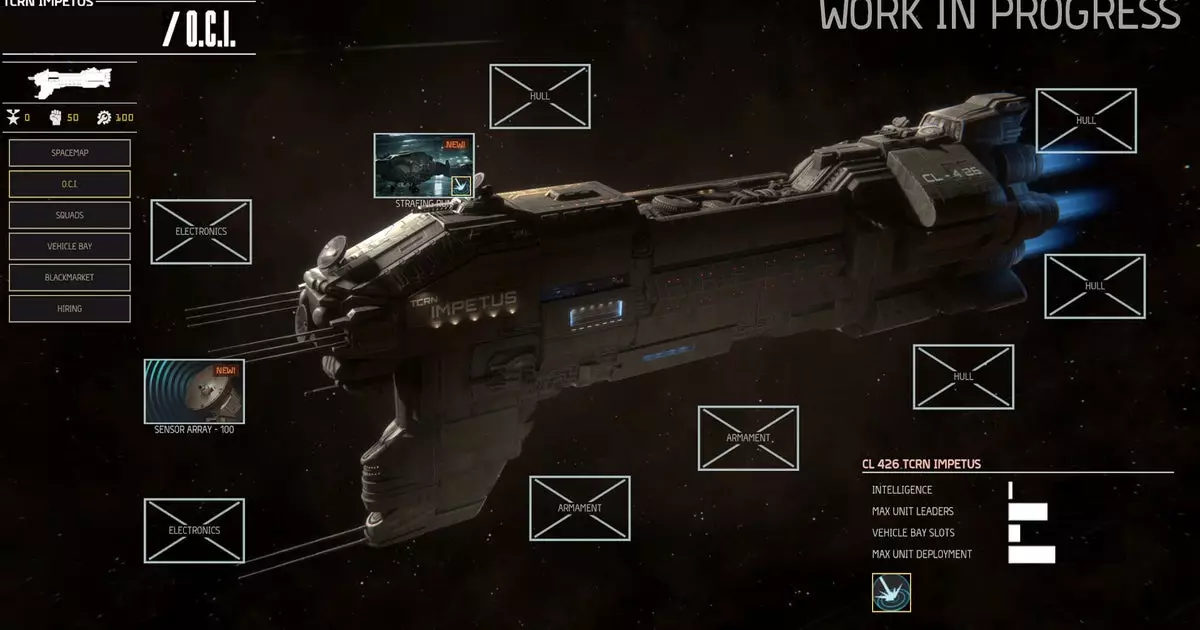The realm of video games often presents us with an enticing blend of strategy and role-playing, and Overhype’s upcoming title, Menace, appears to be a promising example of this fusion. While the first impressions lean heavily on its turn-based combat, it is the strategic elements surrounding these battles that serve as the backbone of the gameplay experience. This article delves into the mechanics of Menace, exploring how its strategic components work harmoniously with the tactical elements to offer a rich gaming experience.
The Strategic Layer: The Bread of the Game
In any well-structured game, the strategic layer can be likened to the bread of a sandwich—it holds everything together and adds necessary structure. In Menace, players navigate a starmap labeled the Wayback solar system, a colorful tableau of planets and factions. Here, strategic decisions are paramount, as each choice may carry weighty consequences down the line. Neglecting a faction’s request for aid can lead to a souring relationship, which in turn can inhibit future alliances and resources.
Players are equipped with different resources: promotion points for squad development, OCI (Operational Capability Improvements) for upgrading ships, and authority points to manage and bolster crew morale. These elements create a delicate balancing act for the player, who must decide how to allocate limited resources effectively while keeping both the crew and the ship in optimal condition.
Mission planning plays a pivotal role in how Menace unfolds. A player must assess numerous factors, such as ongoing requests from various factions, the readiness of their crew, and the potential ramifications of each mission. The game exemplifies a classic dilemma in strategy RPGs: should urgent problems be dealt with immediately, or should the player conserve resources for a potentially more pressing issue later on? It’s a test of foresight, as should resources be mismanaged, the consequences can drastically affect the flow of gameplay.
Moreover, the game integrates random story events into the mission planning phase. This adds an unpredictable element that can influence strategic choices, compelling players to adapt their strategies on the fly. Those who thrive in chaotic environments will find this to be an invigorating challenge, while others may view it as a source of unnecessary frustration—a complex dance of preparation and spontaneity.
Another aspect that adds depth to Menace’s gameplay is the potential for ship upgrades. A well-constructed ship is more than just a vessel; it can be a game-changing asset during missions. Players gain access to various enhancements, which can significantly impact mission outcomes. For instance, options such as calling in aerial support or deploying advanced reconnaissance tools can turn the tide of a battle.
Yet, it is important to note that upgrades can come with a significant resource cost. Players must decide which enhancements are worth the investment and which can be sidelined for more immediate concerns. This aspect of tactical decision-making is another layer in the game’s rich tapestry, demanding that players make evaluations that influence their overall strategy.
Character Development: Uniqueness in Unity
In Menace, character management is a vital part of gameplay, and this is where individuality shines through a motley crew of characters. Each squad leader possesses a unique skill tree and personal traits, fostering a sense of uniqueness yet requiring players to manage the entire team effectively. The disparities in abilities encourage diverse strategies, as players can align their team composition to complement their tactical choices.
Players have the ability to promote characters, enhancing their abilities and introducing new gameplay dynamics, resulting in a sense of progress throughout the game. However, the need to keep a close watch on team morale adds an additional layer of complexity. A discontent crew may lead to unexpected failures during missions—thus making crew management as critical as tactical combat.
As it stands, Menace appears to offer a well-rounded experience, balancing the tactical excitement of battles with the strategic depth of mission planning and character management. While some elements may seem conventional within the strategy-RPG genre, the interplay between different features creates a robust gaming landscape that promises to keep players engaged.
With its release scheduled for next year, there remains a glimmer of hope for further mechanical innovations, particularly in the strategic elements that, while integral, feel a touch familiar. Nonetheless, Menace manages to keep the excitement alive, suggesting that the journey through its gameplay will be anything but bland. In this rich stew of role-playing and tactical strategy, players will undoubtedly find ample opportunities for exploration and growth.

